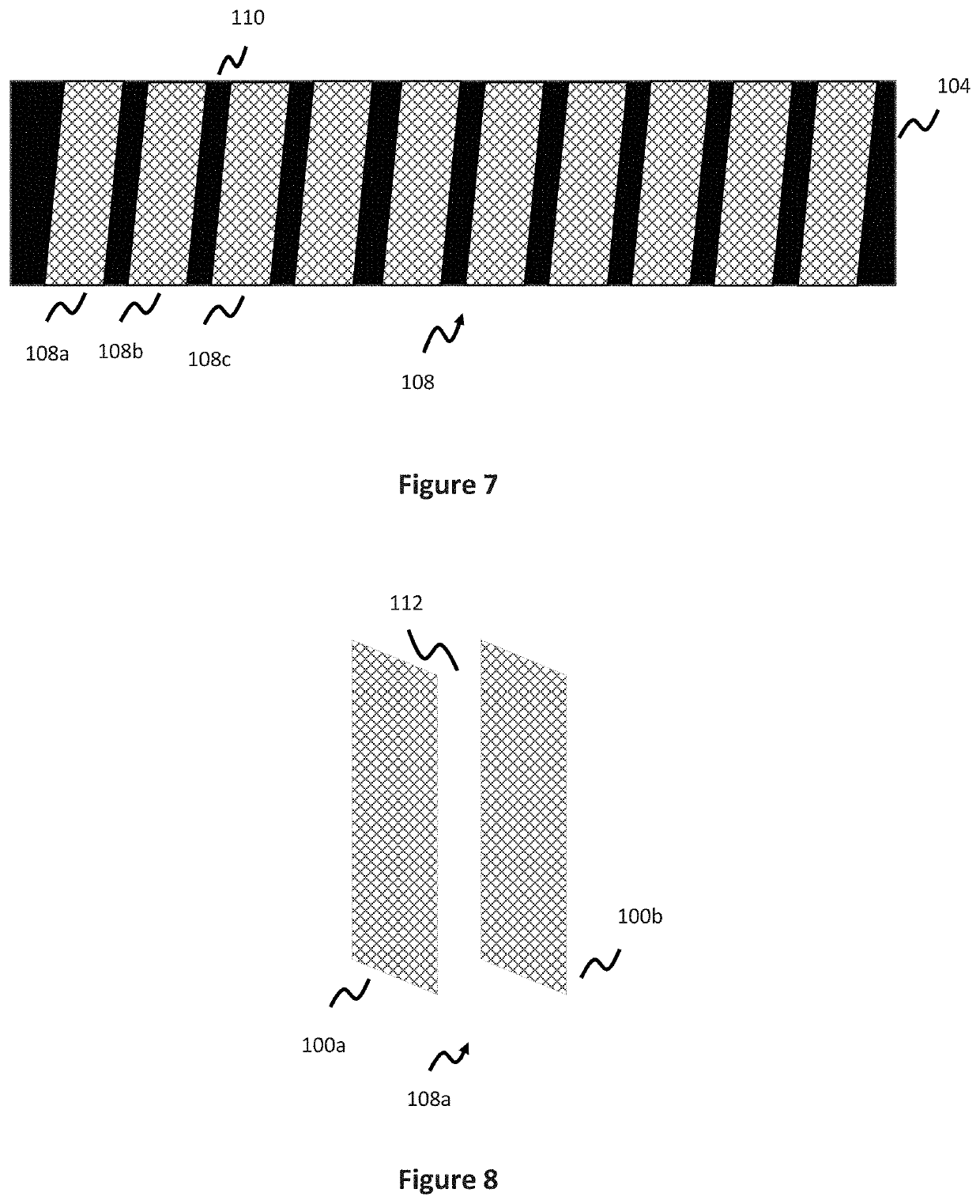Medical Device With Enhanced Shape Characteristics
a technology of shape characteristics and medical devices, applied in the field of medical devices with enhanced shape characteristics, can solve the problems of troublesome deployment, inability to reposition traditional flow diversion stents, and permanent neurological impairment of patients, and achieve the effect of reducing resistance to blood flow
- Summary
- Abstract
- Description
- Claims
- Application Information
AI Technical Summary
Benefits of technology
Problems solved by technology
Method used
Image
Examples
Embodiment Construction
[0054]Stents are used for a variety of reasons in the vasculature, for instance acting as a scaffold to help vessel patency. One class of stents, discussed earlier, are known as flow diversion stents and are implanted in the vessel adjacent the neck of an aneurysm to help reduce or limit blood flow into the aneurysm. Where porosity is defined as the amount of open space in the stent (e.g. the inverse of the percentage of area comprised by the stent material itself), flow diversion stents utilize a relatively low porosity to help limit the amount of blood flow into the aneurysm.
[0055]Traditional stents, including flow diversion stents, utilize a fixed tubular structure. However, this design is generally stiff and can therefore cause complications in deployment—for instance in smaller blood vessels (e.g., those in the neurovasculature), or deployment along tortuous anatomy. The following embodiments generally deal with stents, including flow diversion stents, and have particular utili...
PUM
 Login to View More
Login to View More Abstract
Description
Claims
Application Information
 Login to View More
Login to View More - R&D
- Intellectual Property
- Life Sciences
- Materials
- Tech Scout
- Unparalleled Data Quality
- Higher Quality Content
- 60% Fewer Hallucinations
Browse by: Latest US Patents, China's latest patents, Technical Efficacy Thesaurus, Application Domain, Technology Topic, Popular Technical Reports.
© 2025 PatSnap. All rights reserved.Legal|Privacy policy|Modern Slavery Act Transparency Statement|Sitemap|About US| Contact US: help@patsnap.com



